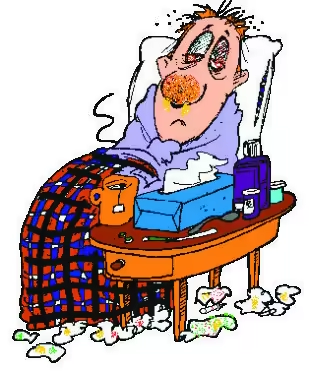Given the recent Corona Virus pandemic, a spotlight has been beamed on how the human resources department is equipped to handle health matters in the workplace. Presently the HR department, the perceived nucleus for all people issues, is reactive rather than proactive. There is a need for it to find ways of addressing problems before they get out of hand. What must be kept in mind is that not all health problems are physical and easily recognizable. Some are mental or emotional, one such case is depression.
According to WHO, an estimated 264 million people suffer from depression worldwide, with many of these people also suffering from symptoms of anxiety. A recent WHO-led study estimates that depression and anxiety disorders cost the global economy US$ 1 trillion each year in lost productivity. Workplaces that promote mental health and support people with mental disorders are more likely to reduce absenteeism, increase productivity and benefit from associated economic gains. A negative working environment may lead to physical and mental health problems, harmful use of substances or alcohol, absenteeism and lost productivity. Another WHO study estimated that for every US$ 1 put into scaled up treatment for common mental disorders, there is a return of US$ 4 in improved health and productivity.
Research shows that unemployment, particularly long term unemployment, can have a detrimental impact on mental health. At a global policy level, WHO's Global Plan of Action on Worker’s Health (2008-2017) and Mental Health Action Plan (2013-2030) outline relevant principles, objectives and implementation strategies to promote good mental health in the workplace. These include: addressing social determinants of mental health, such as living standards and working conditions; activities for prevention and promotion of health and mental health, including activities to reduce stigmatization and discrimination; and increasing access to evidence-based care through health service development, including access to occupational health services. To assist organizations and workers, WHO have produced the “Protecting Workers’ Health” series which guides on common issues such as harassment and stress that can affect the health of workers. As part of the Mental health Gap Action Programme (mhGAP), which provides tools for evidence-based health care, WHO’s technical instruments for early identification and management of alcohol and drug use disorders and suicide prevention can also be relevant for mental health in the workplace.
The role of the HR
An online survey conducted by the Harvard Business Review and Mind Share Partners which included 1,500 full-time workers found that 86 percent said they think it's important that a company's culture supports mental health. Employers need to create a psychologically safe culture where employees feel safe and supported sharing what they are going through. Lots of businesses send workers with drinking issues to a luxury alcohol rehab facility where they can recover in a discreet and supportive environment. These programs give employees the tools they need to return to work healthier and more focused, benefiting both the individual and the organization.
Ernst & Young instituted an interactive program on the signs and symptoms of and interventions and resources for mental illnesses and addiction. It was developed for company leaders, managers, and concerned peers to destigmatize mental illness, addiction and other personal struggles the organization's employees may be facing. Unum, an employee benefits provider, carried out a survey of 1,850 U.S. employed adults, 1,500 of whom had a diagnosed mental health issue. The respondents included 268 HR professionals. They found that only 25% of managers have received training on how to refer employees to mental health resources, with more than half of those being unsure how they would help a colleague who came to them with a mental health issue. Most employees that suffer untreated depression are doing so because they fear retribution or loss of their job if they report their problems.
As a manager, the focus is to meet the needs of the business. If personal problems are impairing an individual’s ability to perform their workplace duties, then they need to be supported to get help for themselves. Whilst it is not the company’s responsibility to diagnose depression but it is the manager’s responsibility to identify problems that are interfering with work performance and deal with them. This may mean referring the employee to the company employee assistance program, the occupational health department, or human resources.
Given that some HR professionals are also psychologists they are amongst the best people to assist in such cases. Listed below are a few of the major symptoms of depression to look out for:
- Fatigue
- Unhappiness
- Excessive Forgetfulness
- Irritability
- Propensity For Crying Spells
- Indecisiveness
- Lack Of Enthusiasm
- Withdrawal
In the end, not dealing with or ignoring workplace depression will negatively affect your company’s bottom line. With so many companies wanting to find ways to boost productivity and realize a higher bottom line, dealing with workplace depression should be a priority for every employer.

